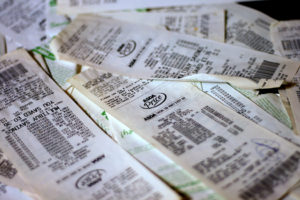Testing Multiple Proportions

Chapter Objectives
By the end of this chapter, the student should be able to:
- Interpret the chi-square probability distribution as the sample size
changes. - Conduct and interpret chi-square goodness-of-fit hypothesis tests.
- Conduct and interpret chi-square test of independence hypothesis
tests. - Conduct and interpret chi-square homogeneity hypothesis tests.
Have you ever wondered if lottery numbers were evenly distributed or if some numbers occurred with a greater frequency? How about if the types of movies people preferred were different across different age groups? What about if a coffee machine was dispensing approximately the same amount of coffee each time? You could answer these questions by conducting a hypothesis test.
You will now study a new distribution, one that is used to determine the answers to such questions. This distribution is called the chi-square distribution.
In this chapter, you will learn the three major applications of the chi-square distribution:
- the goodness-of-fit test, which determines if data fit a particular distribution, such as in the lottery example
- the test of independence, which determines if events are independent, such as in the movie example
- the test of a single variance, which tests variability, such as in the coffee example
